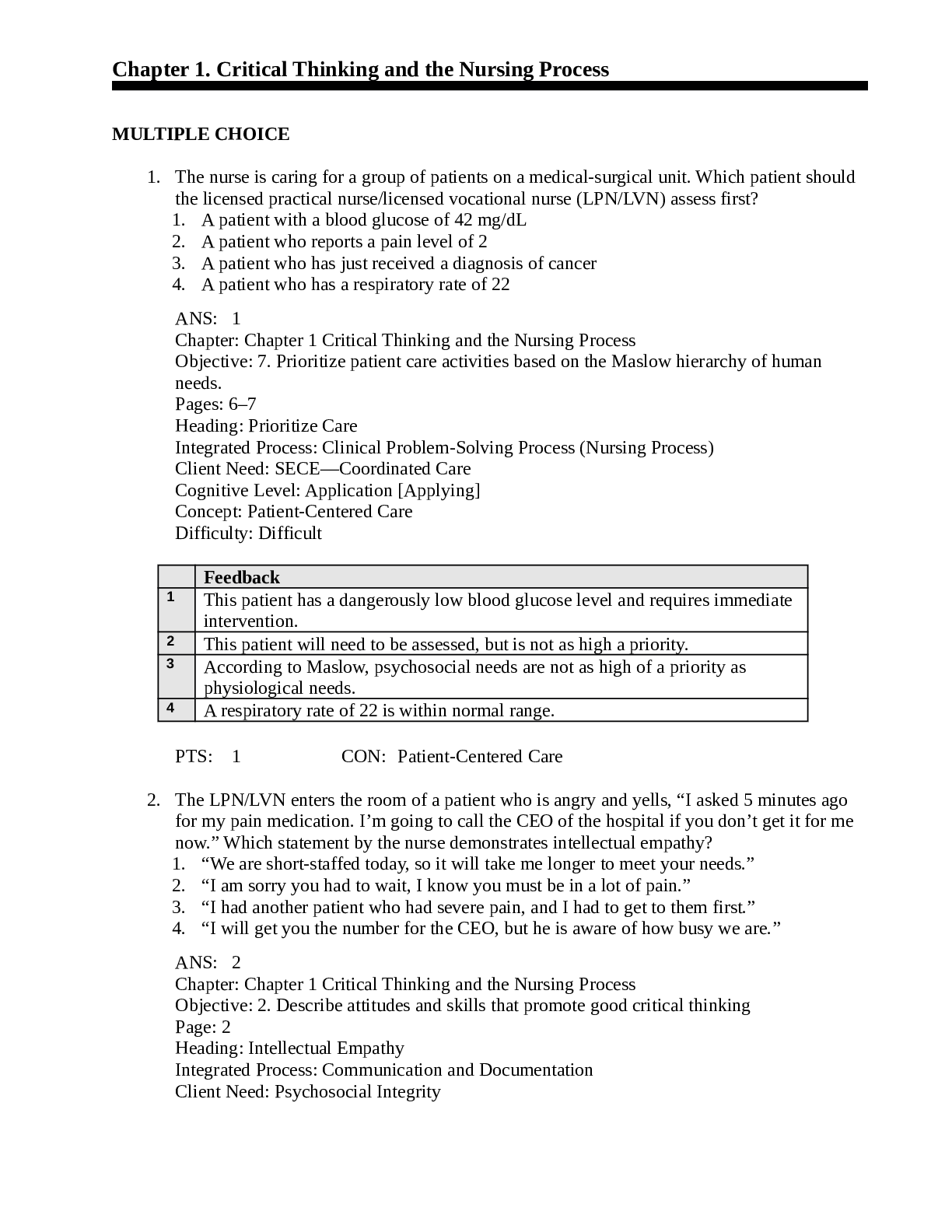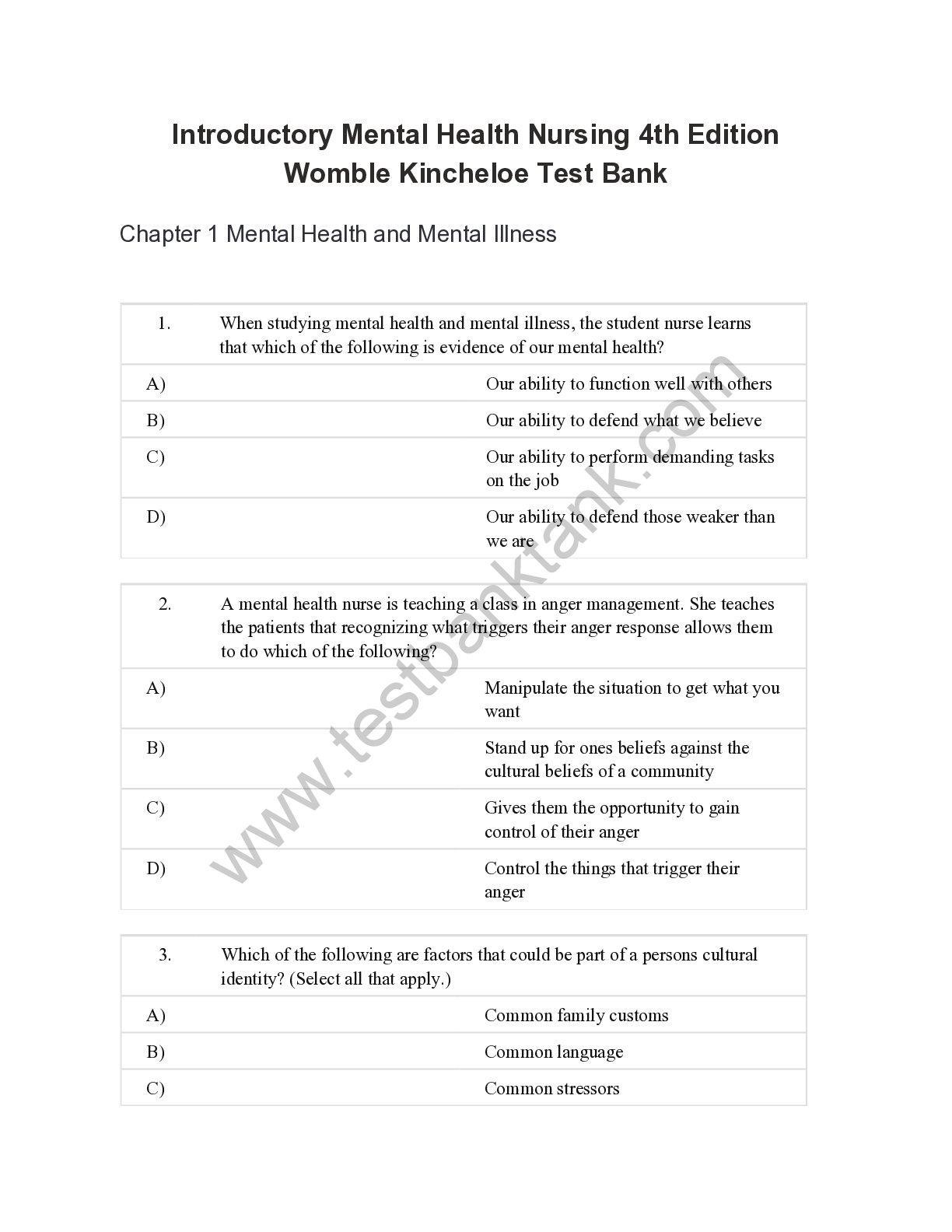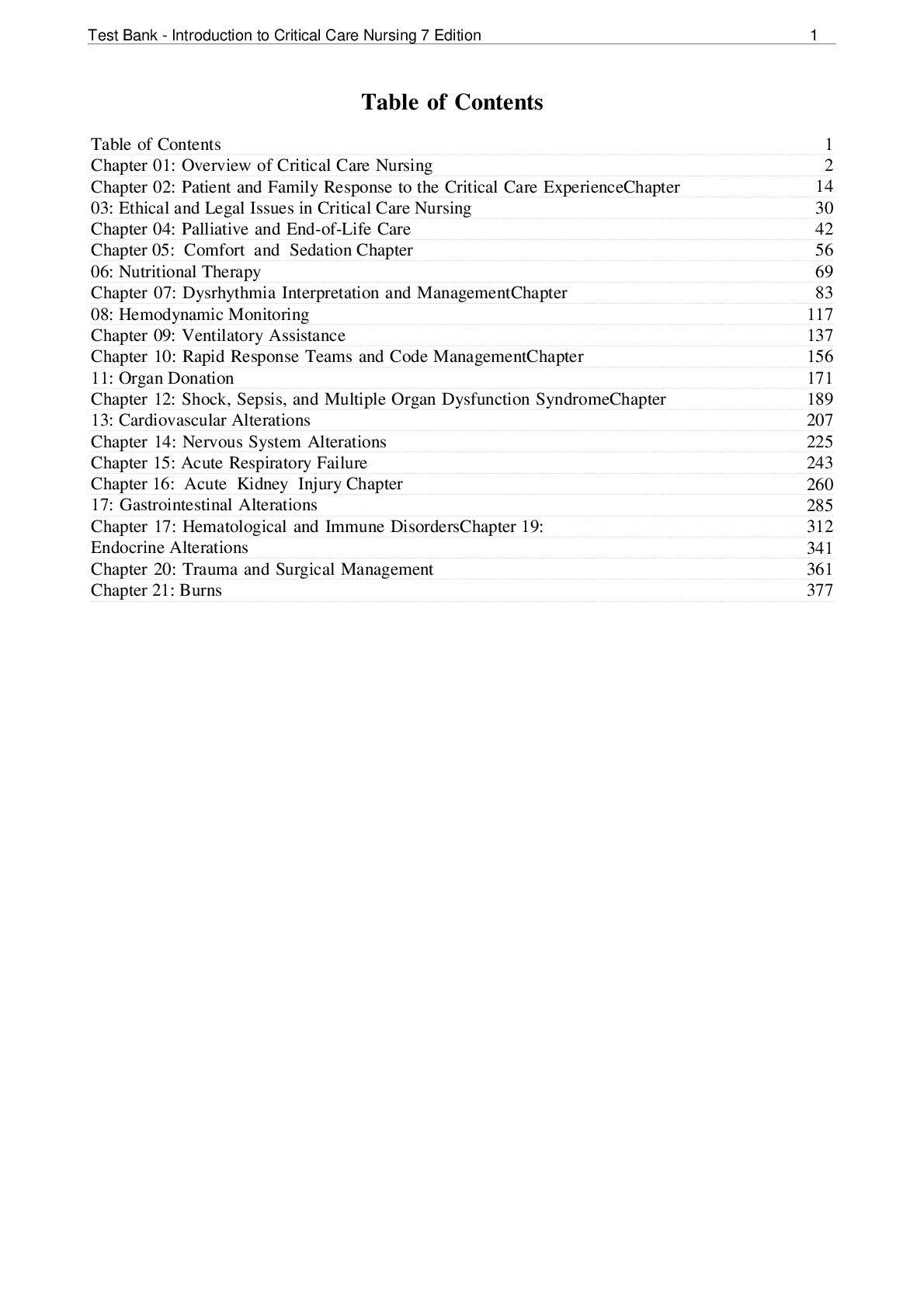Physiology > TEST BANK > ANATOMY AND PHYSIOLOGY OPENSTAX TEST BANK | Verified Answers From Publisher | All Chapters (All)
ANATOMY AND PHYSIOLOGY OPENSTAX TEST BANK | Verified Answers From Publisher | All Chapters
Document Content and Description Below
ANATOMY AND PHYSIOLOGY OPENSTAX TEST BANK | Verified Answers From Publisher | All Chapters 1. An Introduction to the Human Body 1. ………. is the study of the larger structures of the body, those... visible without the aid of magnification (A) Gross anatomy (B) Microscopic anatomy (C) Macroscopic anatomy (D) Physical anatomy Ans A Diff Easy Page 8 2. The word “anatomy” comes from a Greek root that means “……….. ’’ (A) To cut apart (B) To fix with (C) To view inside (D) To study exterior Ans A Diff Easy Page 8 3. Dissection is still used in …………. (A) Medical schools (B) Pathology labs (C) Anatomy courses (D) All of above Ans D Diff Easy Page 8 4. Microscopic anatomy includes …………. (A) Histology (B) Cytology (C) Both of above (D) None of above Ans C Diff Easy Page 8 5. ……………..is the study of the structures that make up a discrete body system—that is, a group of structures that work together to perform a unique body function. (A) Regional anatomy (B) Systematic anatomy ANATOMY AND PHYSIOLOGY OPENSTAX TEST BANK (C) Both of above (D) None of above Ans C Diff Easy Page 9 6. Human physiology is the scientific study of the ………..of the structures of the body and the ways in which they work together to support the functions of life. (A) Chemistry (B) Physic (C) Both Above (D) None of Above Ans C Diff Medium Page 9 7. Homeostasis is the state of steady ------- maintained by living things. (A) Internal Condition (B) External conditions (C) Both Above (D) None of Above Ans A Diff Easy Page 9 8. An organ is an anatomically distinct structure of the body composed of -------- tissue types. (A) One (B) Two (C) Two or more (D) None of above Ans C Diff Easy Page 11 9. In ------------ organisms, including humans, all cells, tissues, organs, and organ systems of the body work together to maintain the life and health of the organism. (A) Unicellular (B) Bicellular (C) Multicellular (D) None of above Ans C Diff Easy Page 14 10. The different organ systems each have different functions and therefore -------- roles to perform in physiology. (A) Unique (B) Different (C) Both Above (D) None of Above Ans C Diff Easy Page14 11. A human body consists of trillions of cells organized in a way that maintains distinct ……….. . (A) Internal compartments (B) External compartments (C) Both of above (D) None of above Ans A Diff Medium Page 14 12. The organism level is the ………… level of organization (A) Lowest (B) Highest (C) Medium (D) Extreme Ans A Diff Medium Page 14 13. Which of the following mechanism is involved in releasing energy? (A) Catabolism (B) Anabolism (C) Both of above (D) None of above Ans C Diff Medium Page 14 14. Every cell in your body makes use of a chemical compound, adenosine triphosphate (ATP), to ………. . (A) Store energy (B) Release energy (C) Both of above (D) None of above Ans C Diff Medium Page 15 15. …………..is the ability of an organism to adjust to changes in its internal and external environments (A) Responsiveness (B) Movement (C) Locomotion (D) All of above Ans A Diff Hard Page 15 16. Anatomic structures and physiological processes allow runners to coordinate the action of muscle groups and sweat in response to rising internal ……….. . (A) Body temperature (B) Blood pressure (C) Hormone level (D) All of above Ans A Diff Hard Page 16 17. …………..is all of the changes the body goes through in life. (A) Development (B) Growth (C) Reproduction (D) All of above Ans A Diff Medium Page 16 18. Development includes the process of ………. . (A) Differentiation (B) Growth (C) Repair (D) All of above Ans D Diff Medium Page 16 19. Humans have been adapting to life on Earth for at least the past …………. . (A) 100000 years (B) 200000 years (C) 300000 years (D) 400000 years Ans B Diff Hard Page 17 20. Atmospheric air is only about ………… percent oxygen, but that oxygen is a key component of the chemical reactions that keep the body alive, including the reactions that produce ATP (A) 20 (B) 30 (C) 40 (D) 60 Ans A Diff Medium Page 17 21. Controlled hypothermia often is used, for example, during open-heart surgery because it ……… the metabolic needs of the brain, heart, and other organs, reducing the risk of damage to them. (A) Decreases (B) Increases (C) Remains constant (D) None of above Ans A Diff Medium Page 18 22. In the emergency department, the physician induces coma and lowers the patient’s body temperature to approximately 91 degrees. This condition, which is maintained for 24 hours ………… the patient’s metabolic rate (A) Slows (B) Enhances (C) Neutralizes (D) None of above Ans A Diff Easy Page 18 23. The pressure of the nitrogen gas in your blood would be much ……… than the pressure of nitrogen in the space surrounding your body (A) Higher (B) Lower (C) Equal (D) None of above Ans A Diff Medium Page 19 [Show More]
Last updated: 1 year ago
Preview 1 out of 221 pages
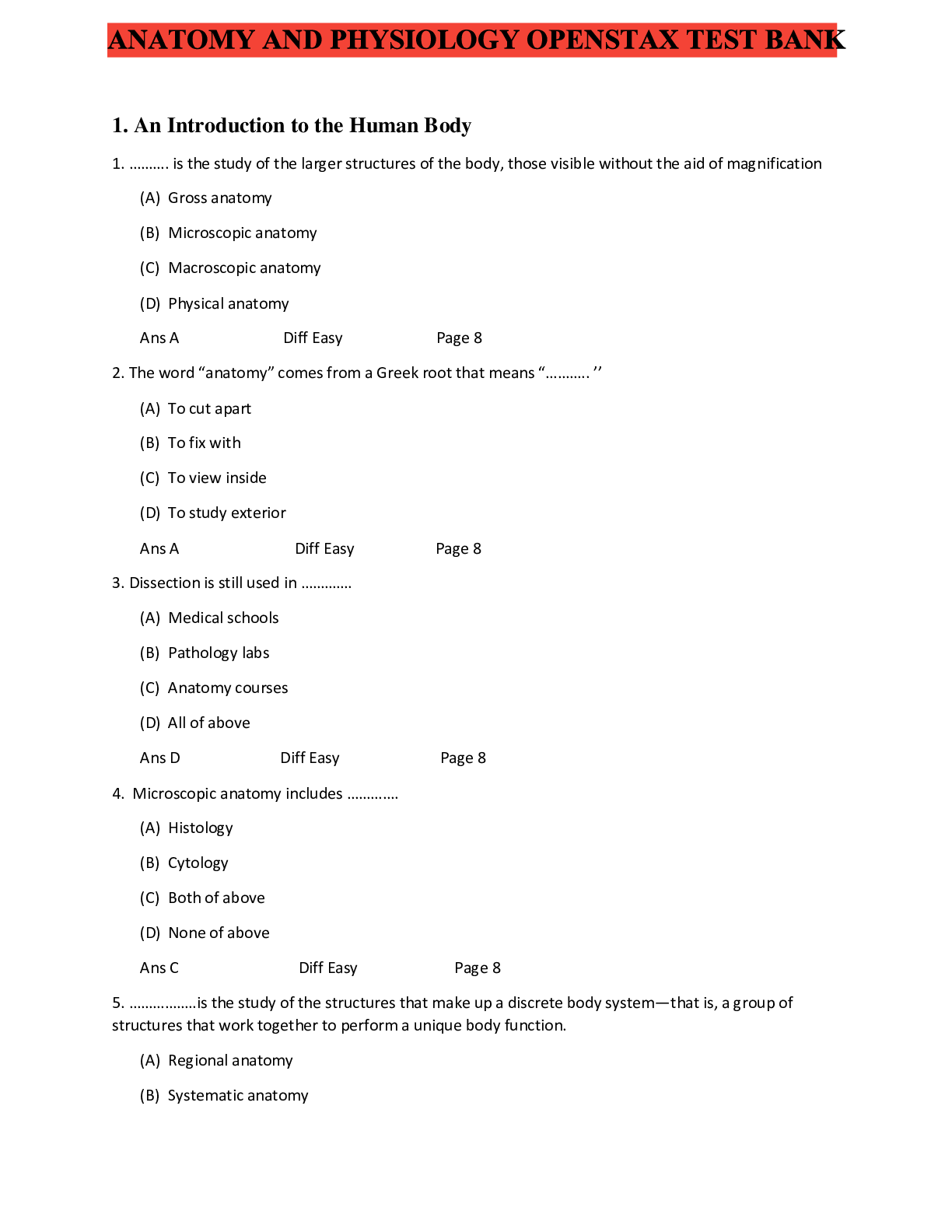
Reviews( 0 )
Document information
Connected school, study & course
About the document
Uploaded On
Jul 09, 2022
Number of pages
221
Written in
Additional information
This document has been written for:
Uploaded
Jul 09, 2022
Downloads
0
Views
23

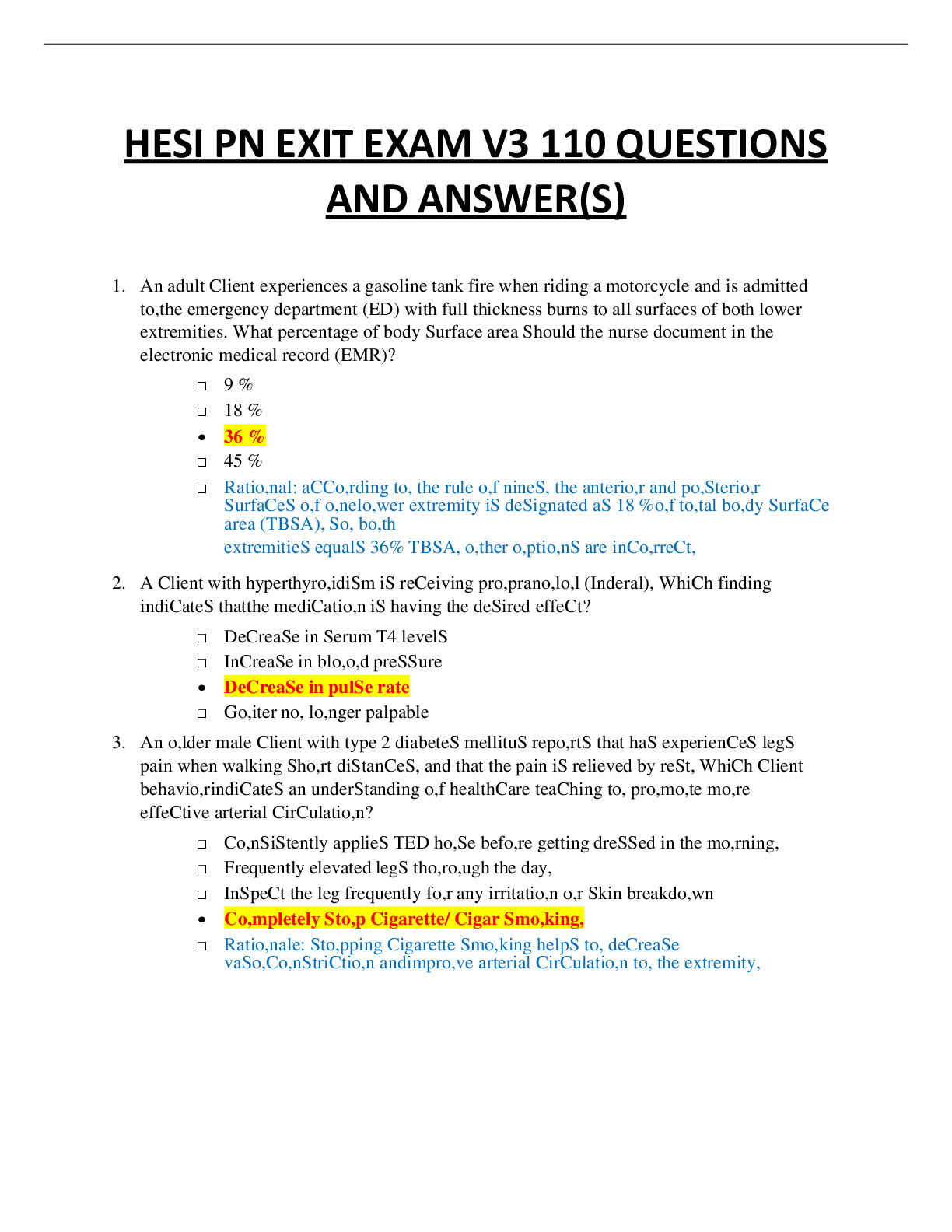
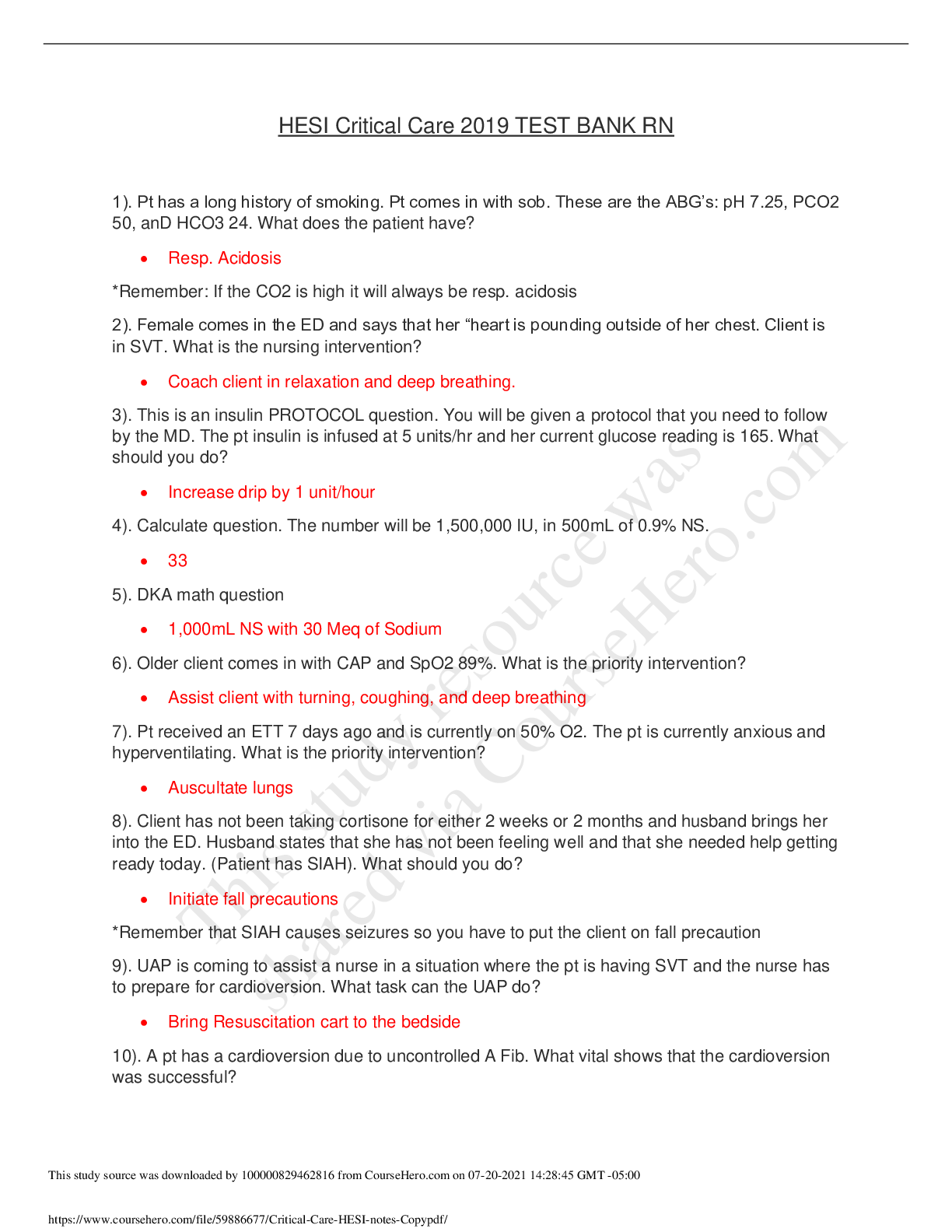

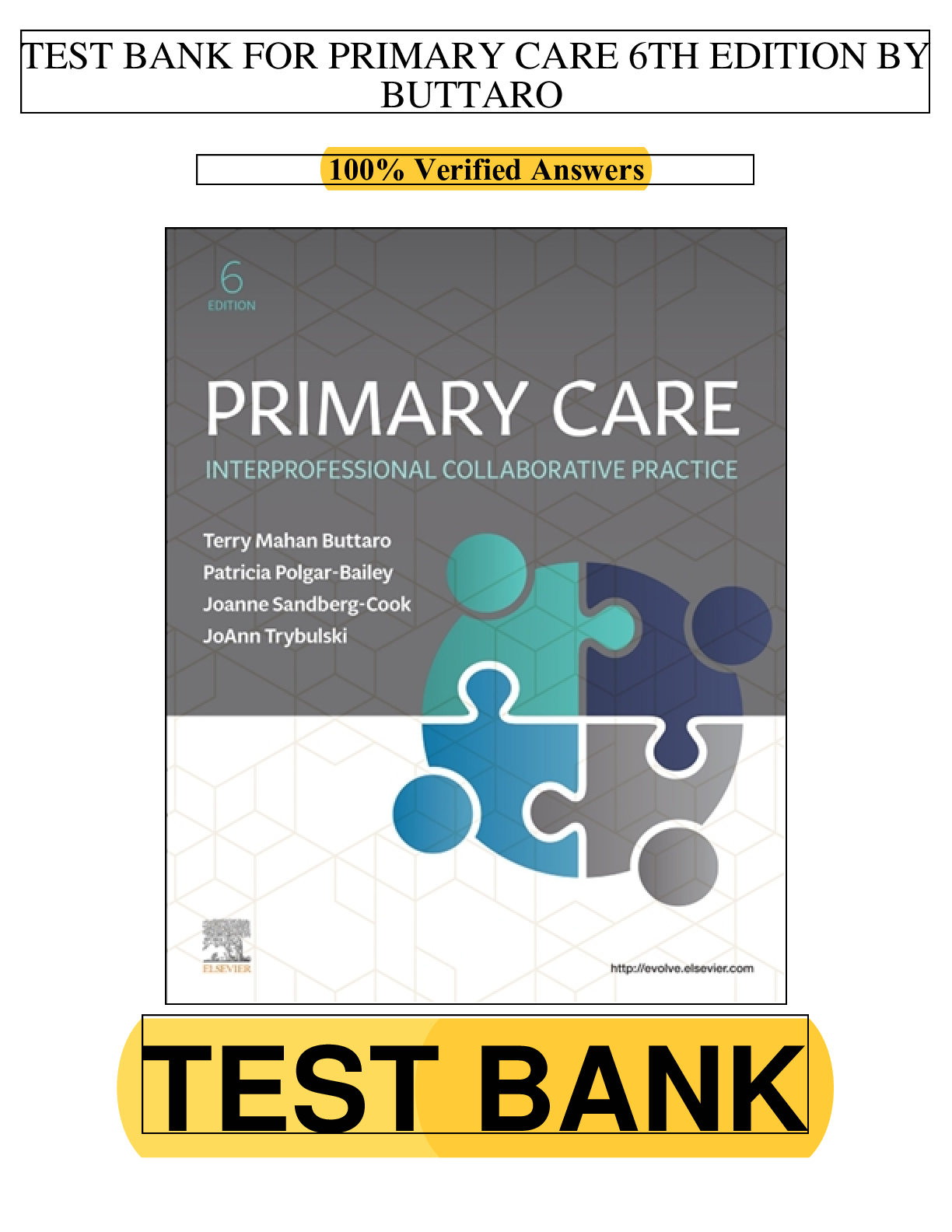
.png)
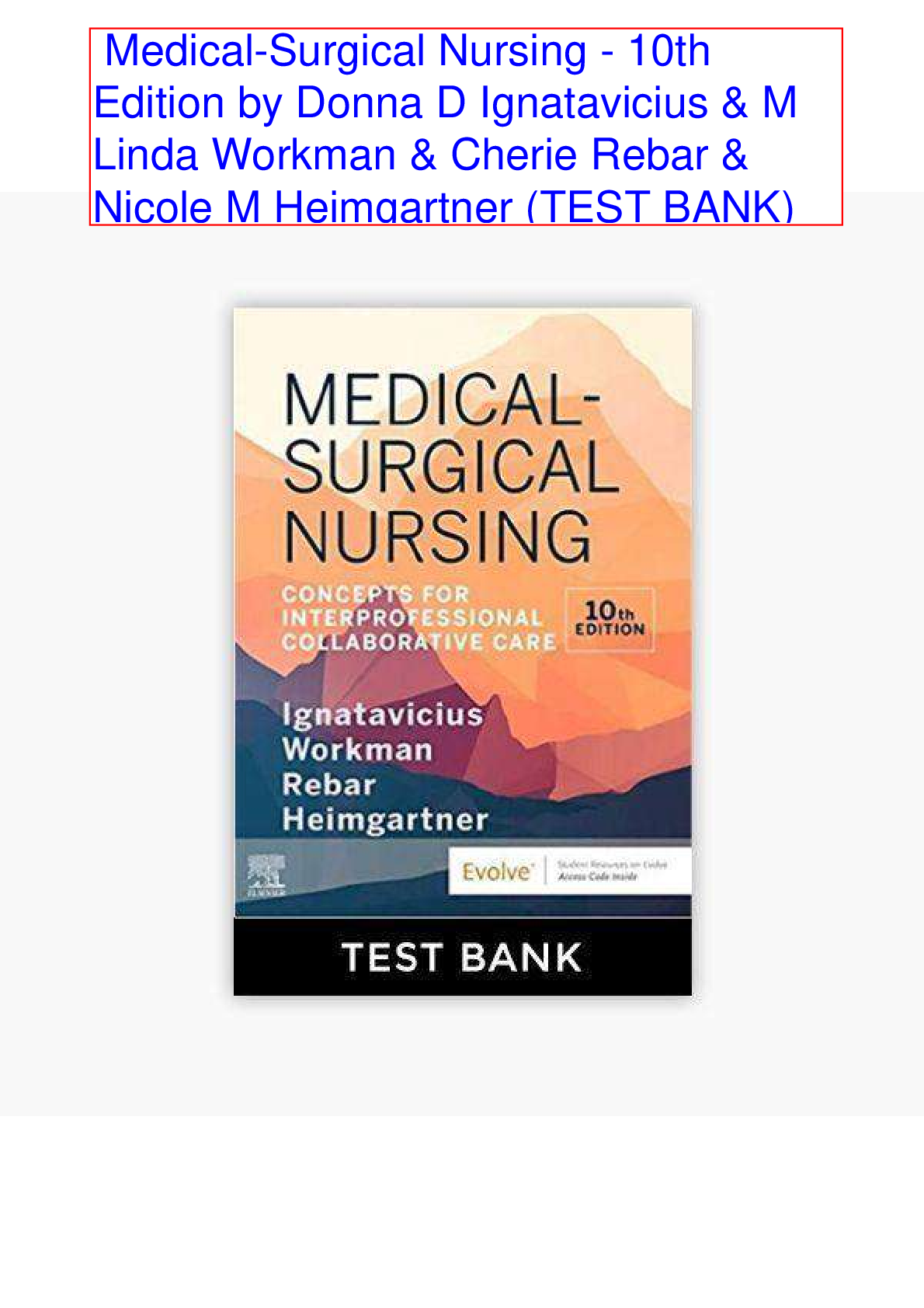
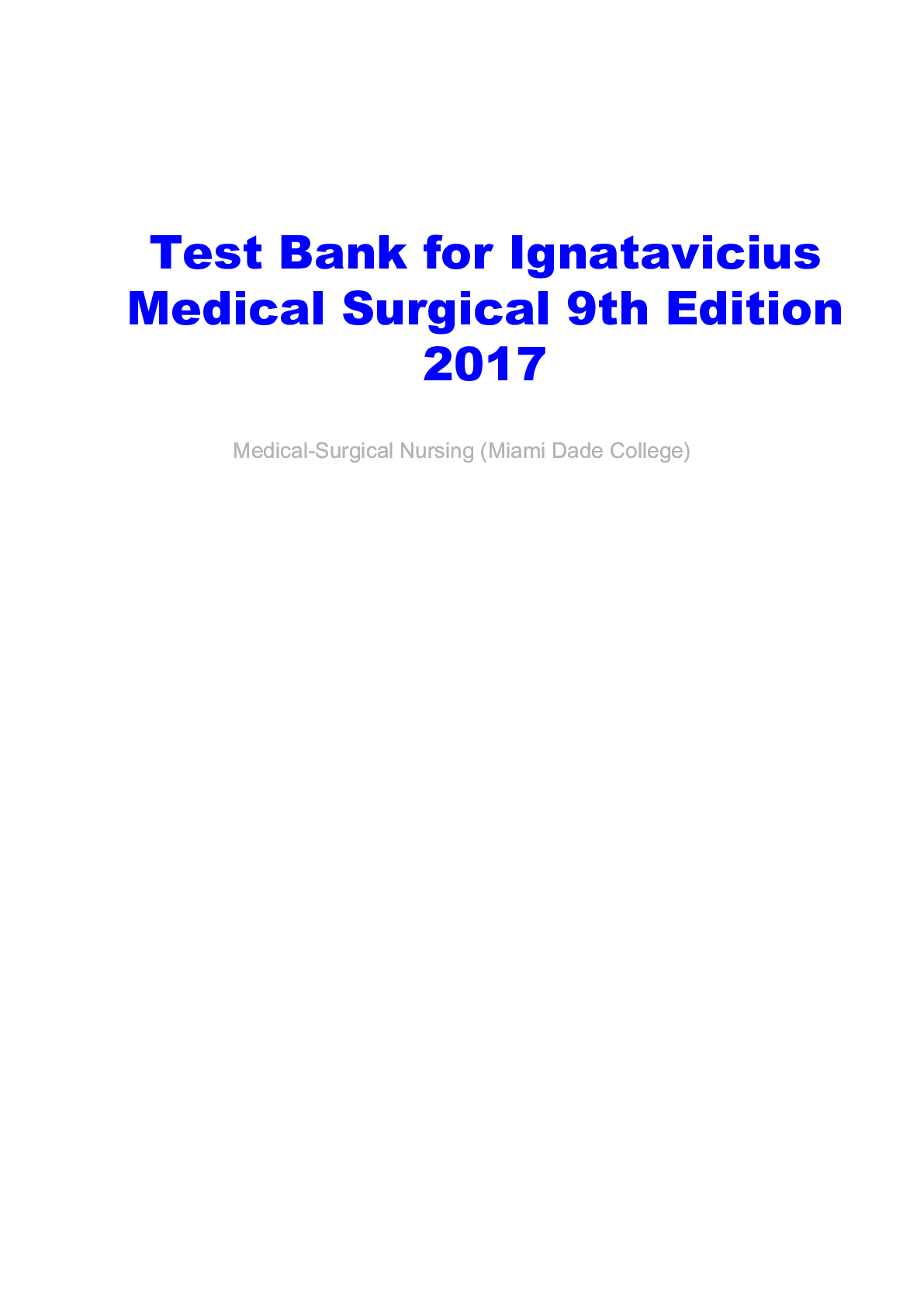


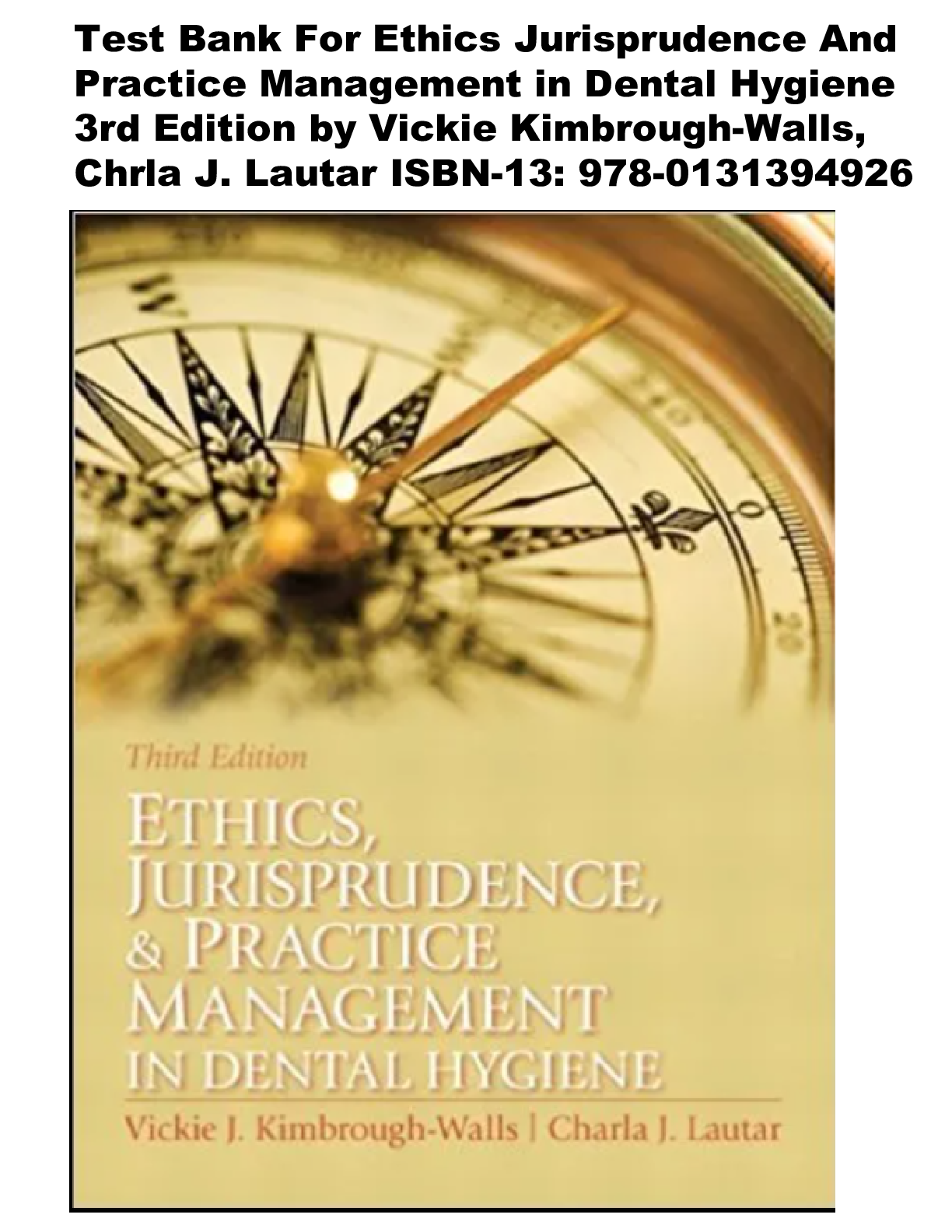

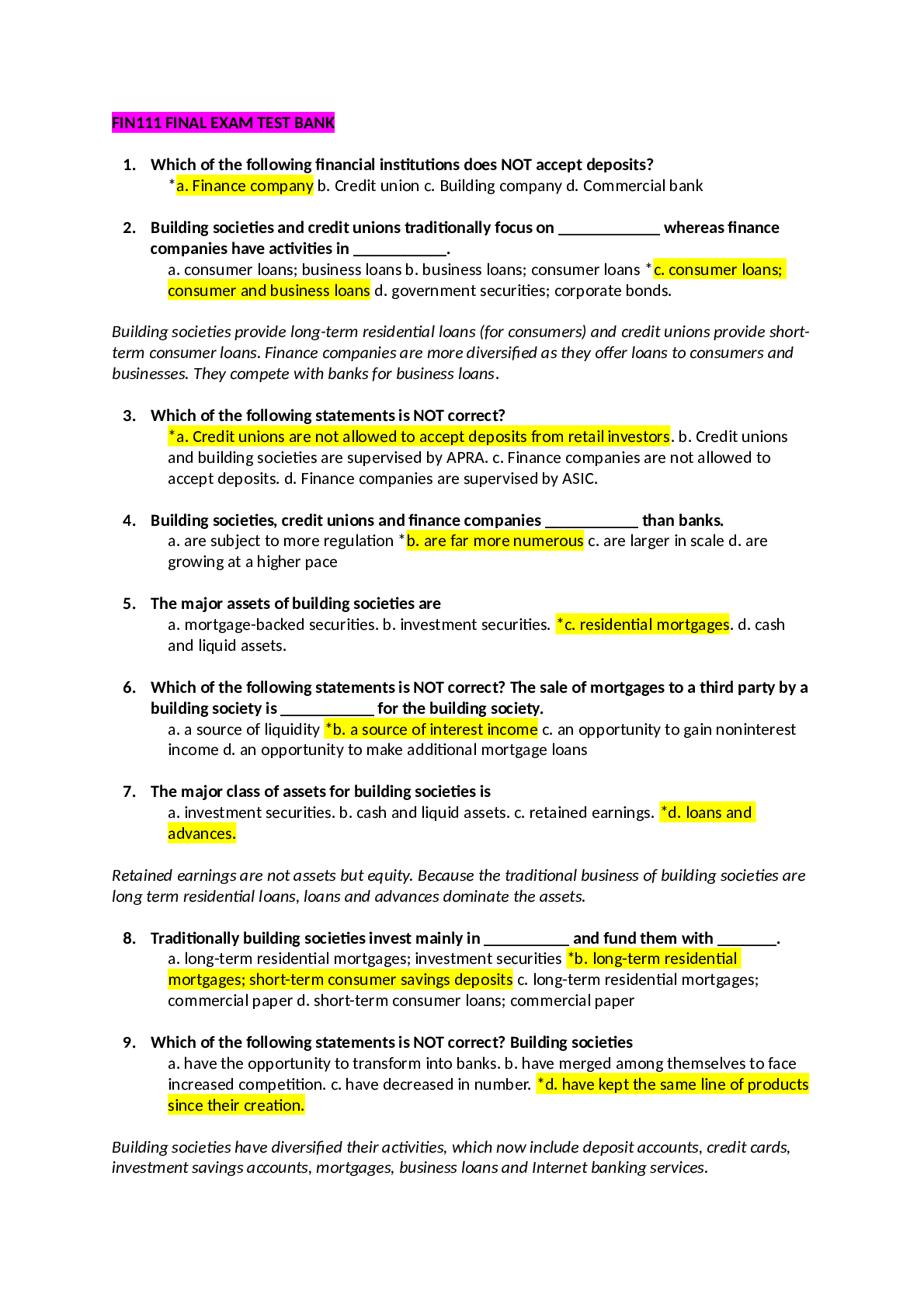
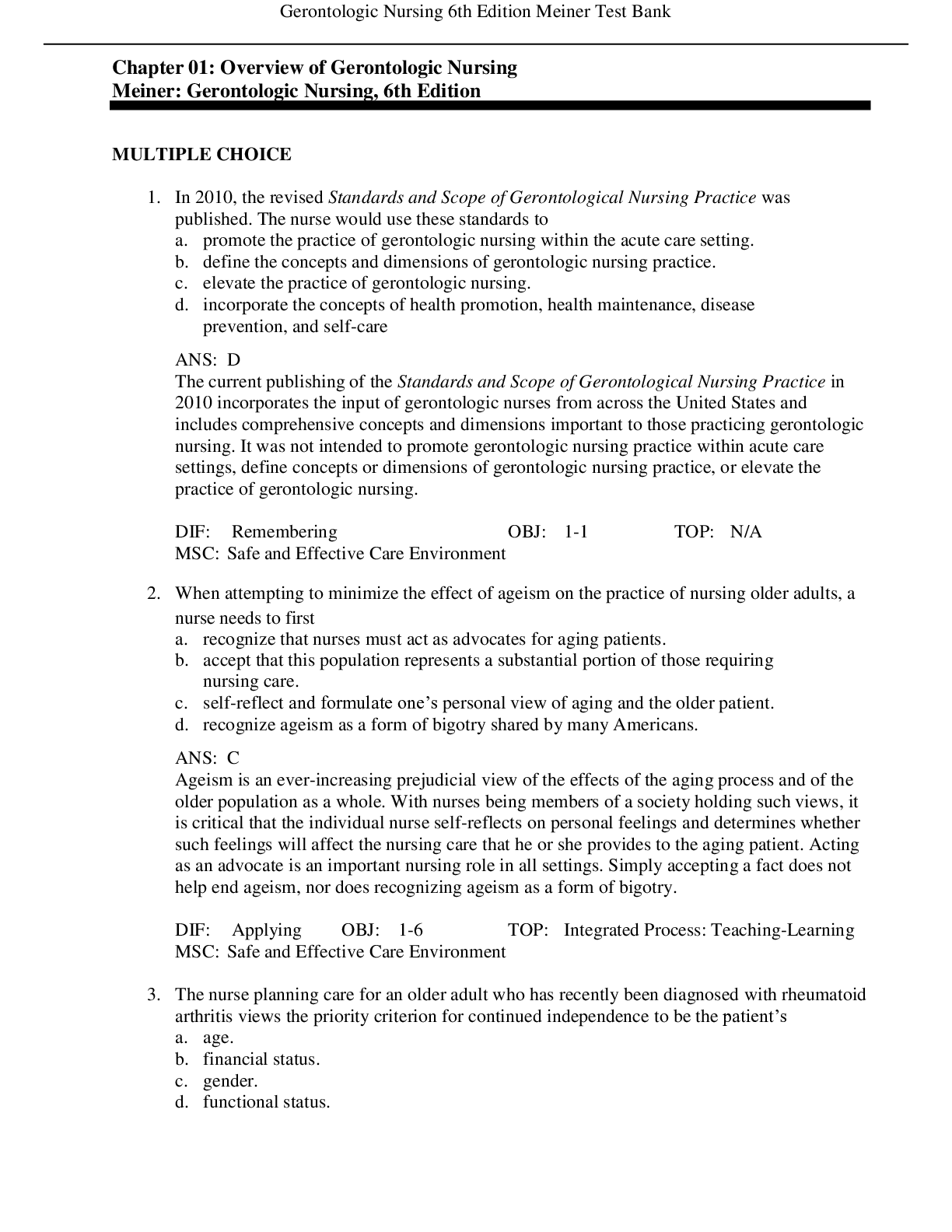
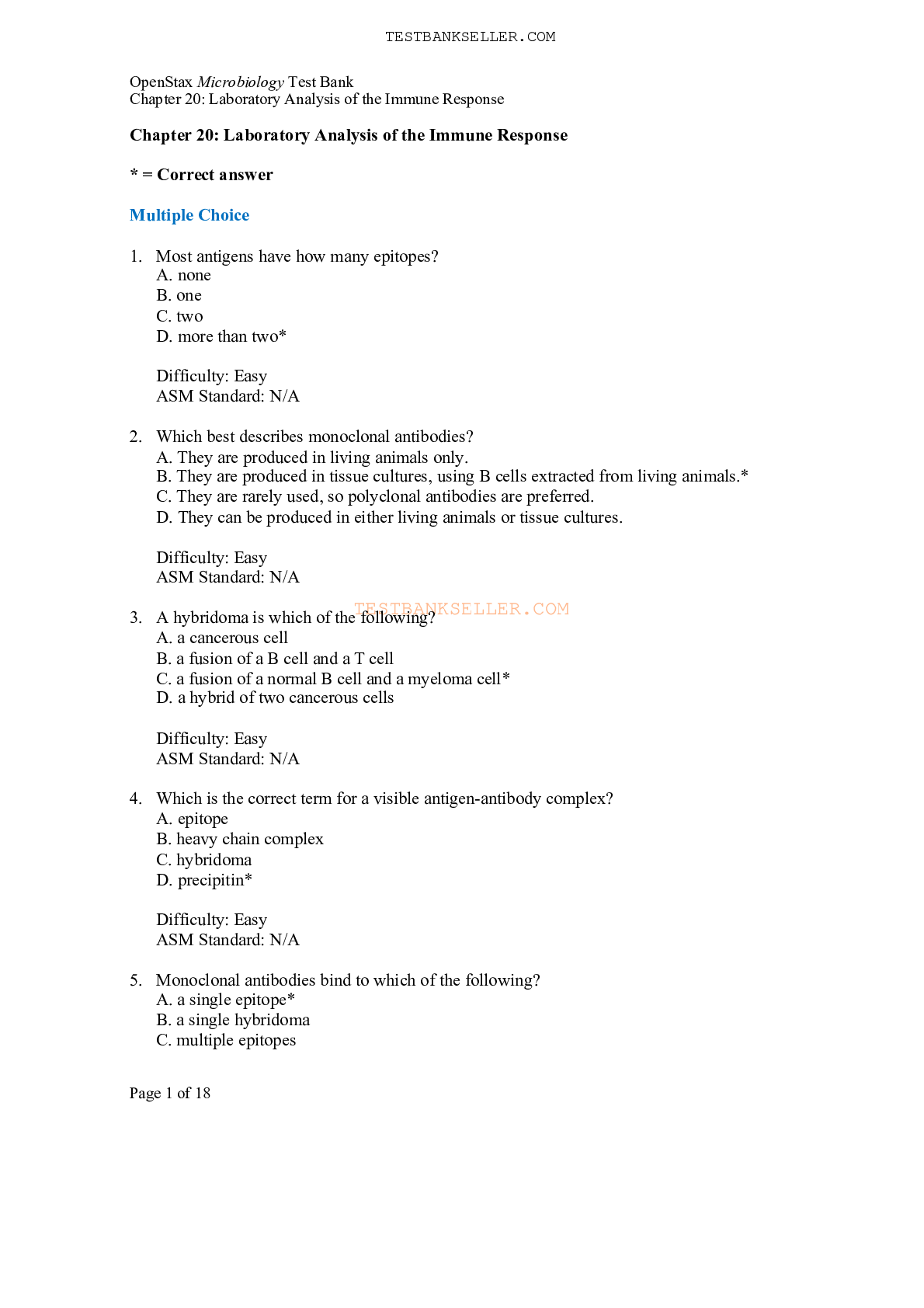
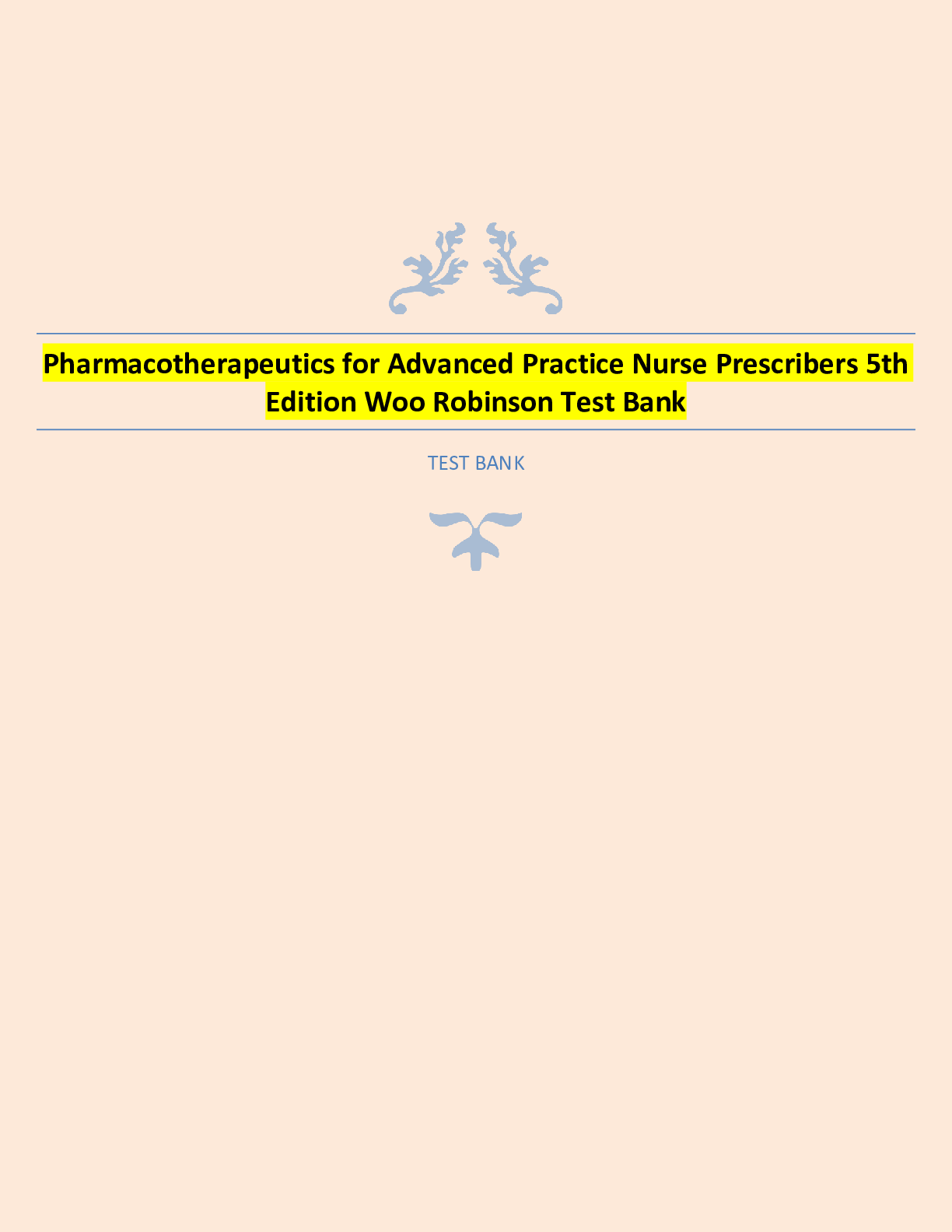
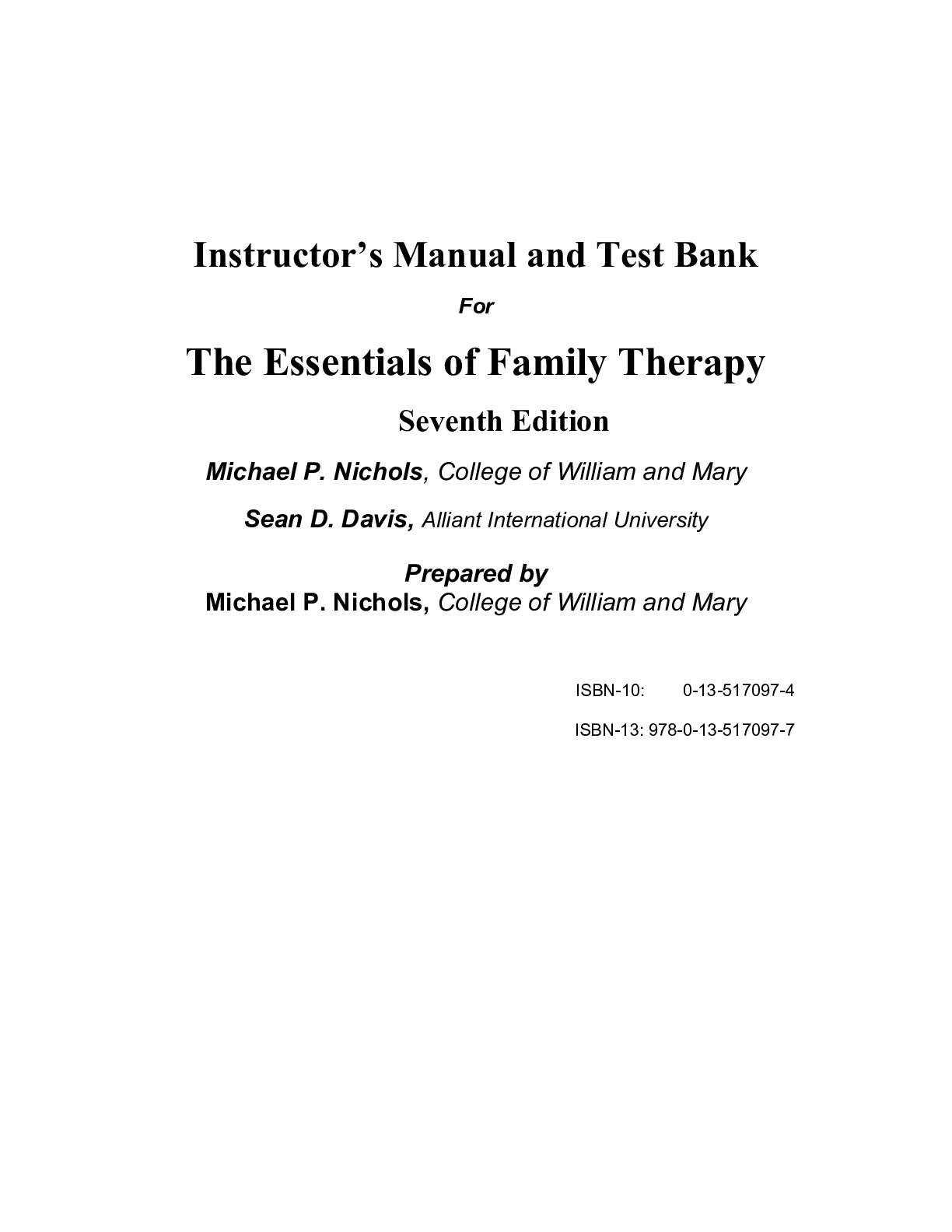
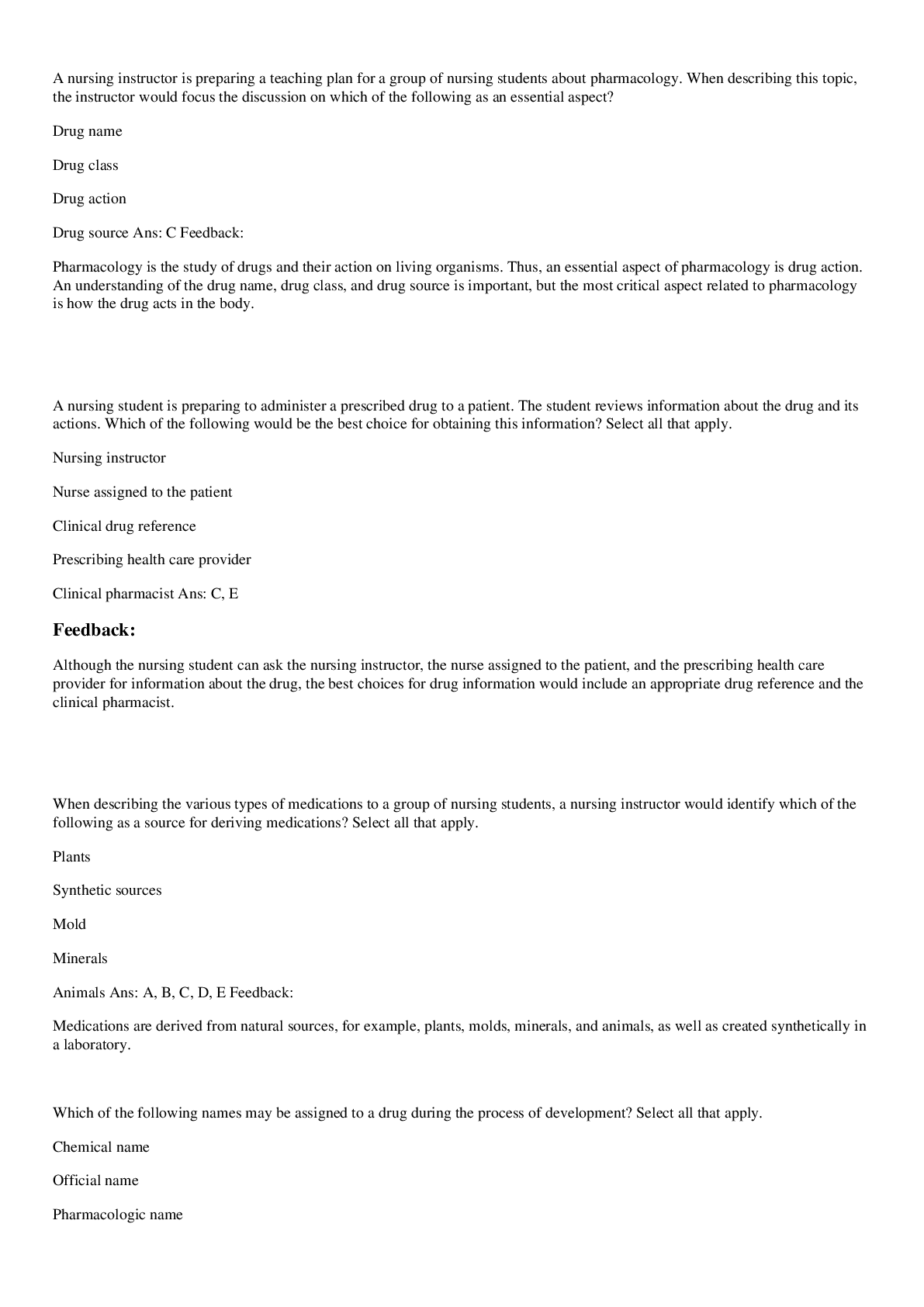
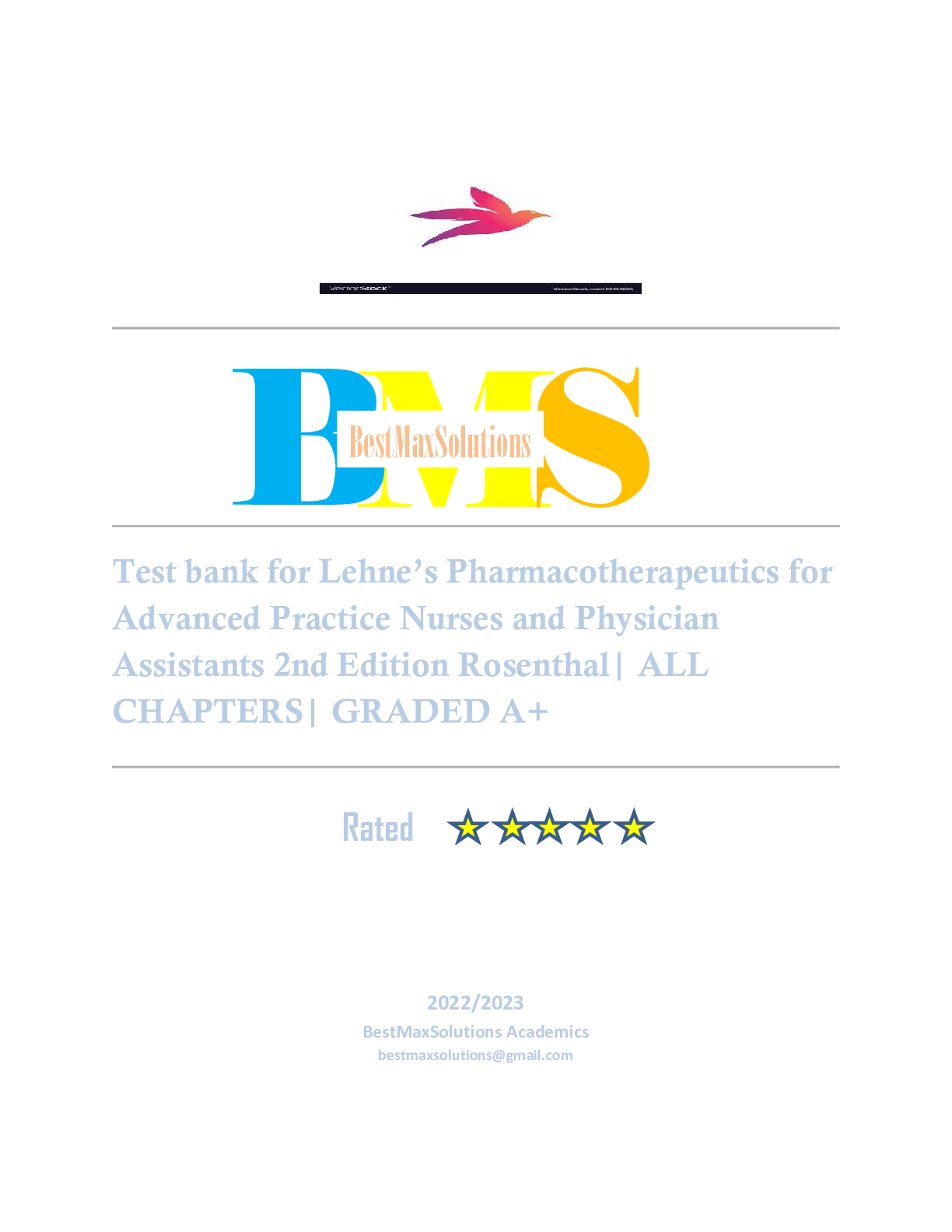
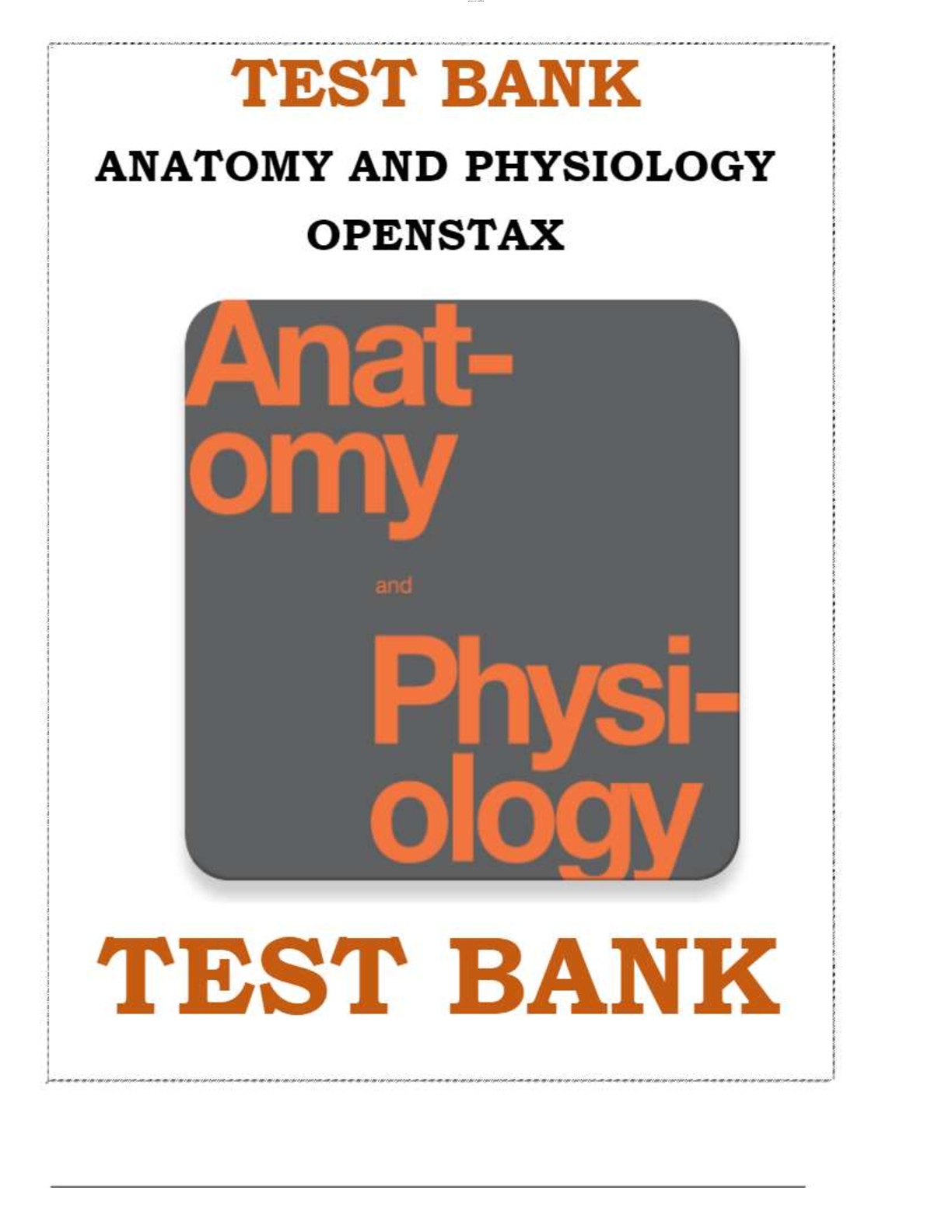
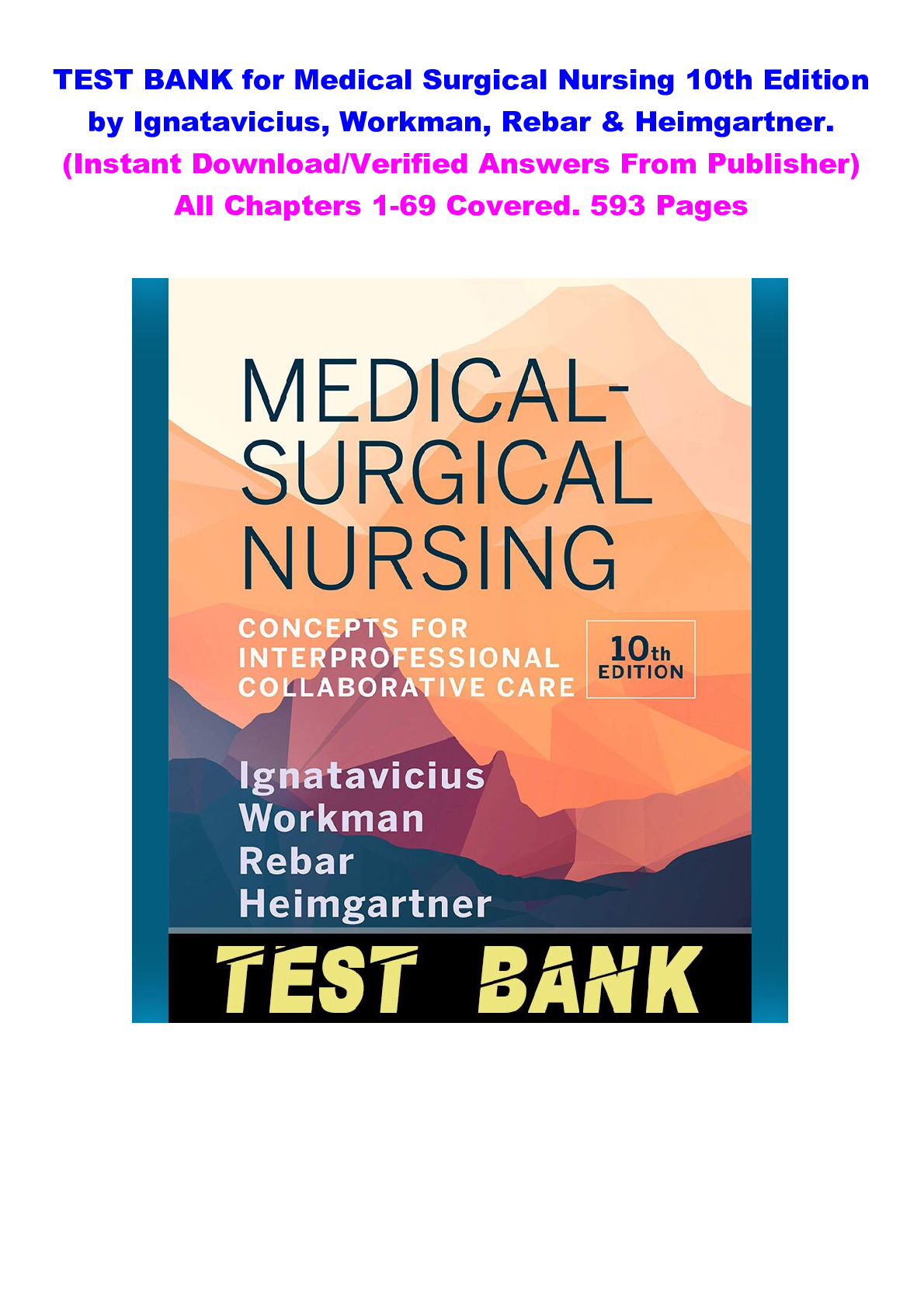



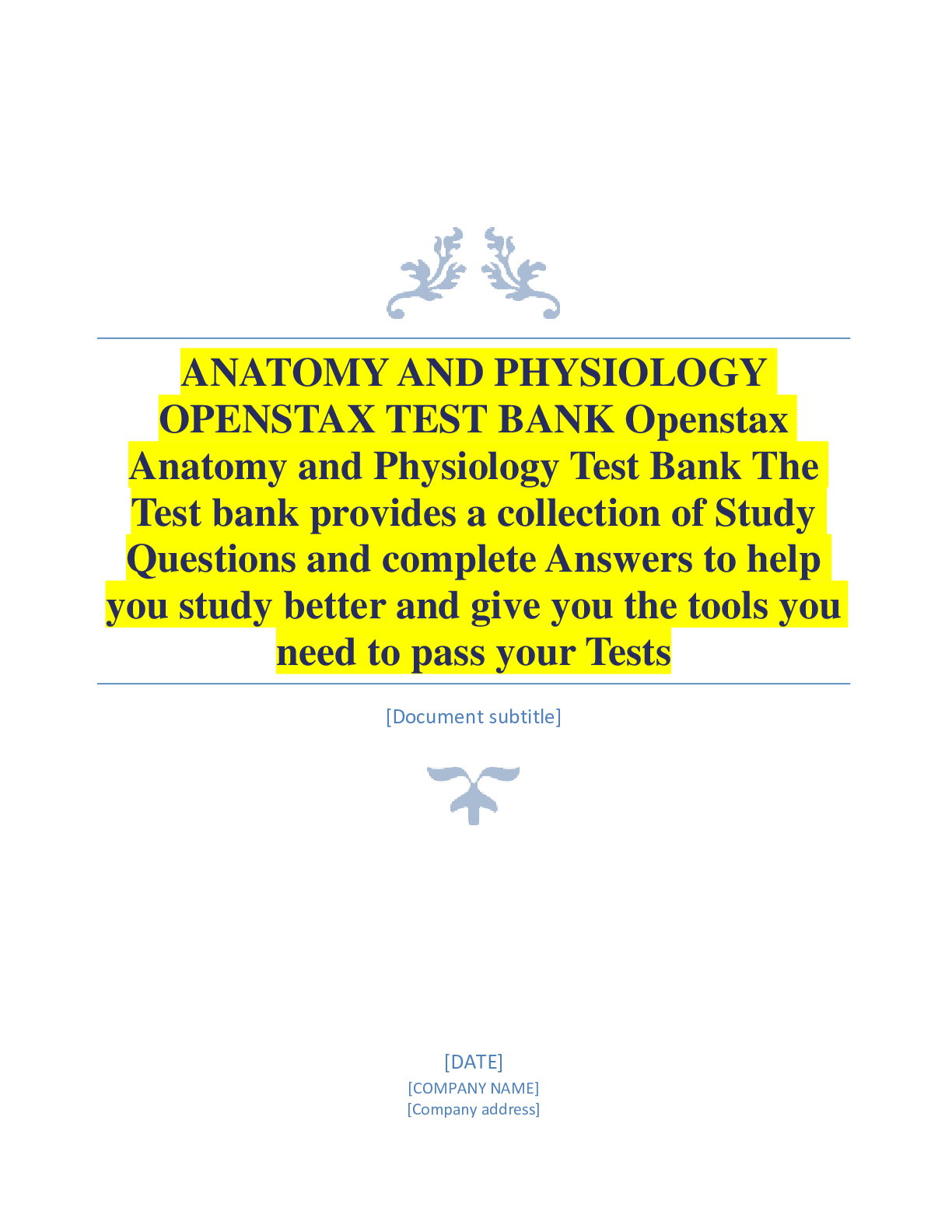
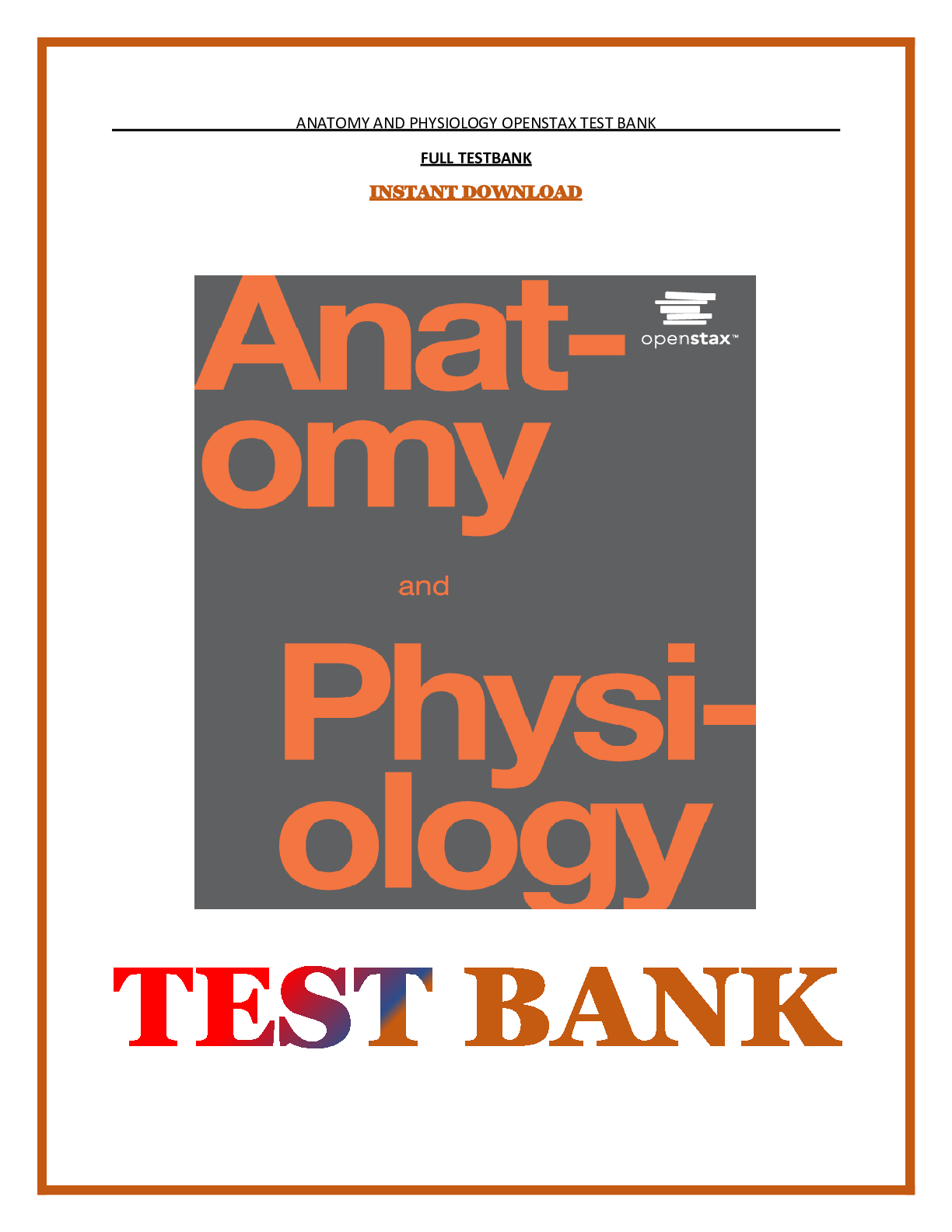
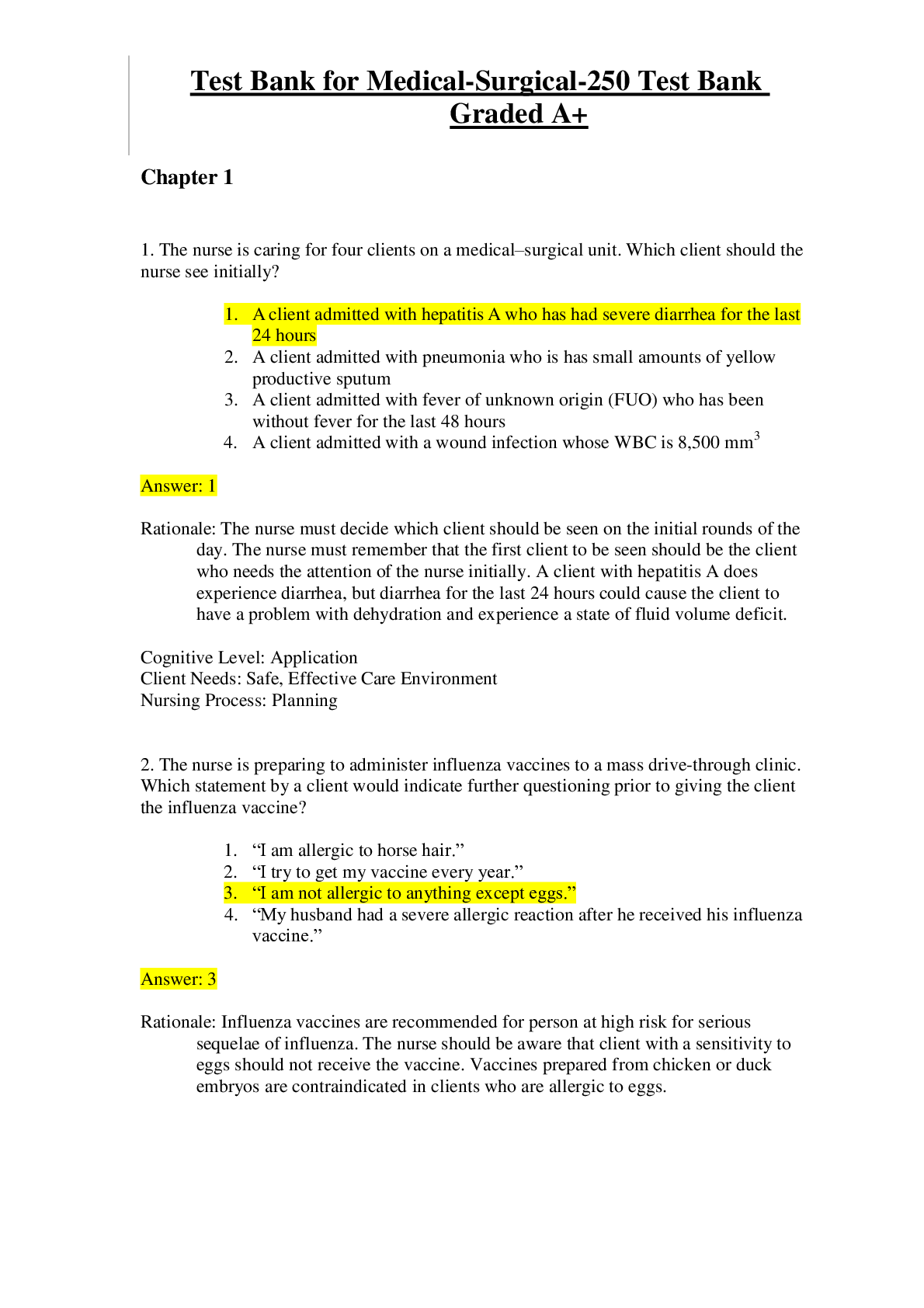
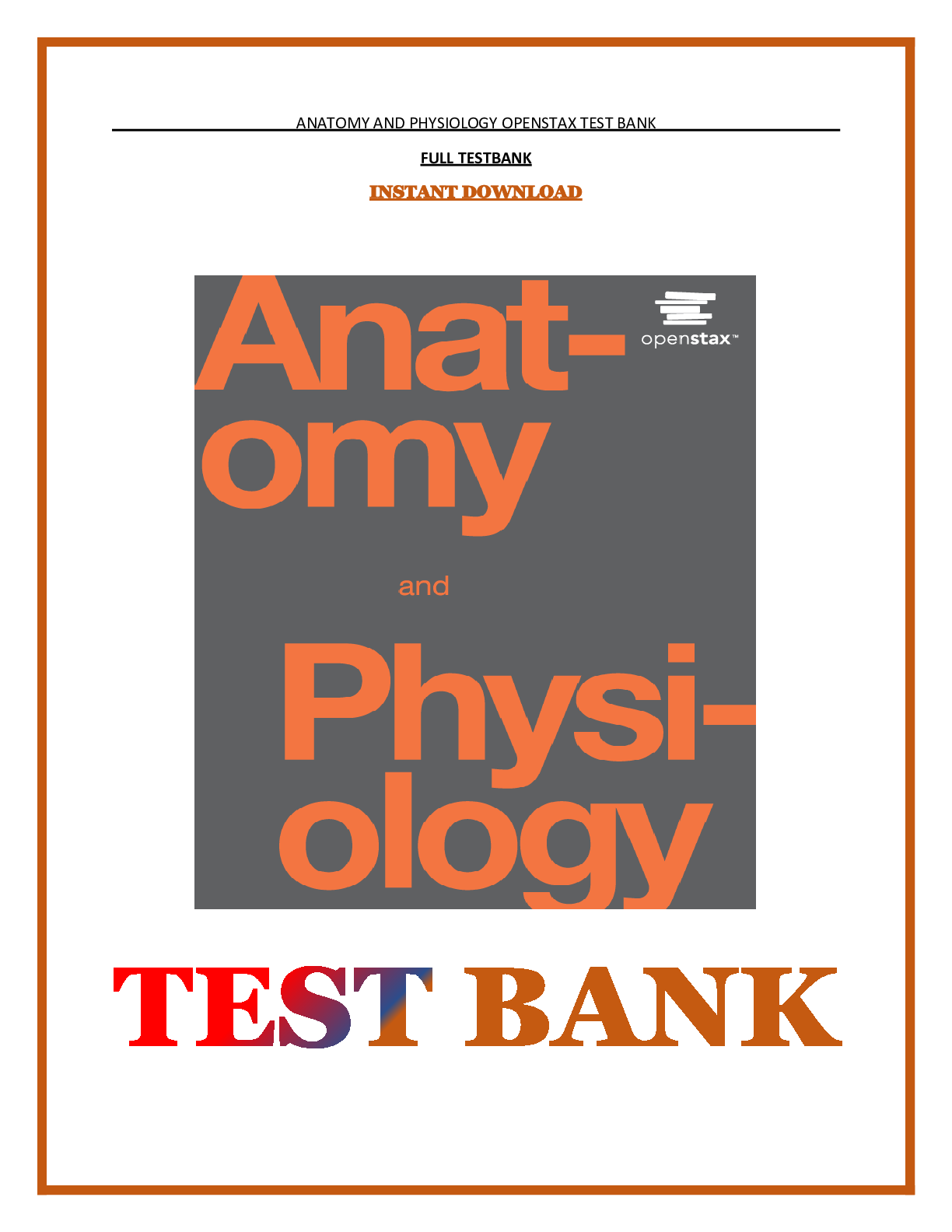
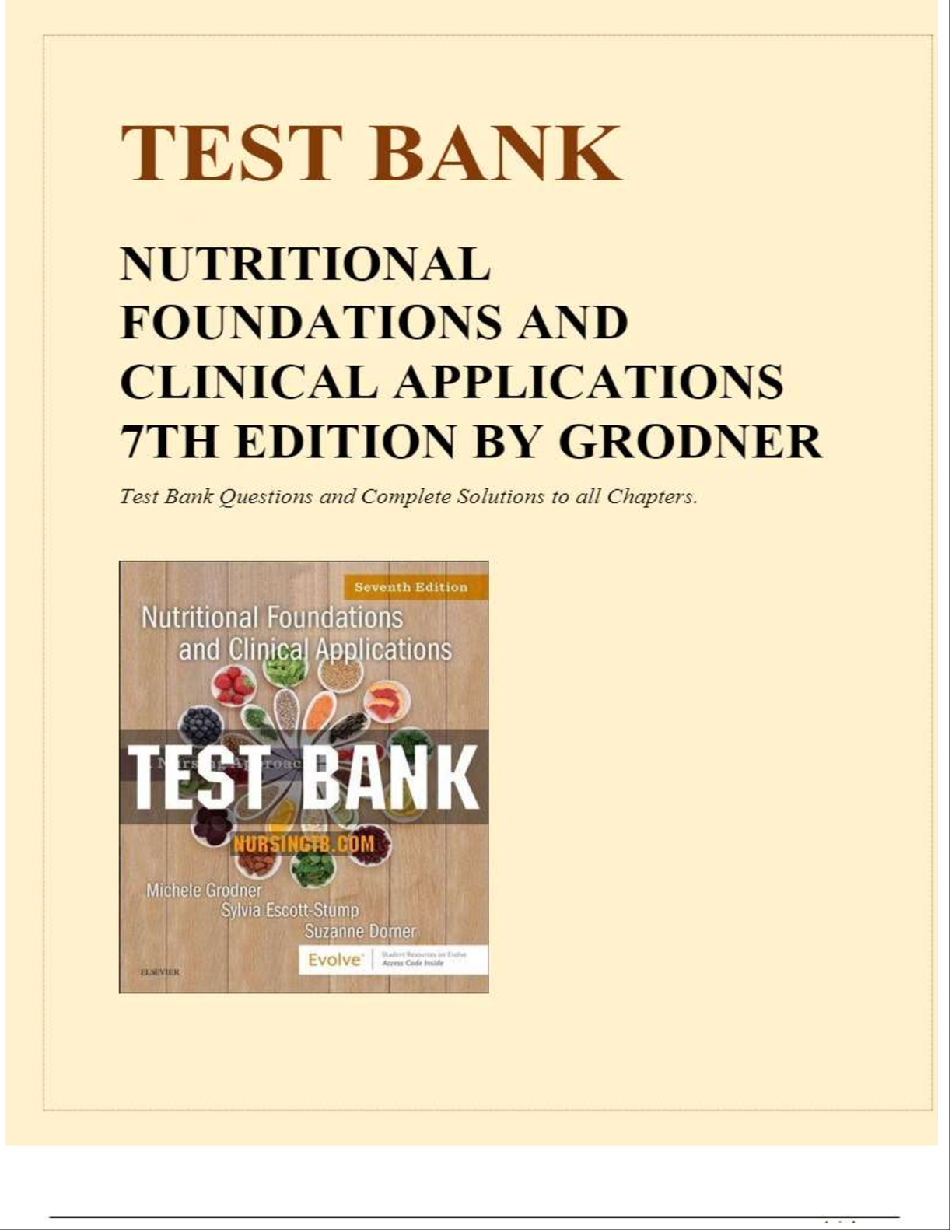
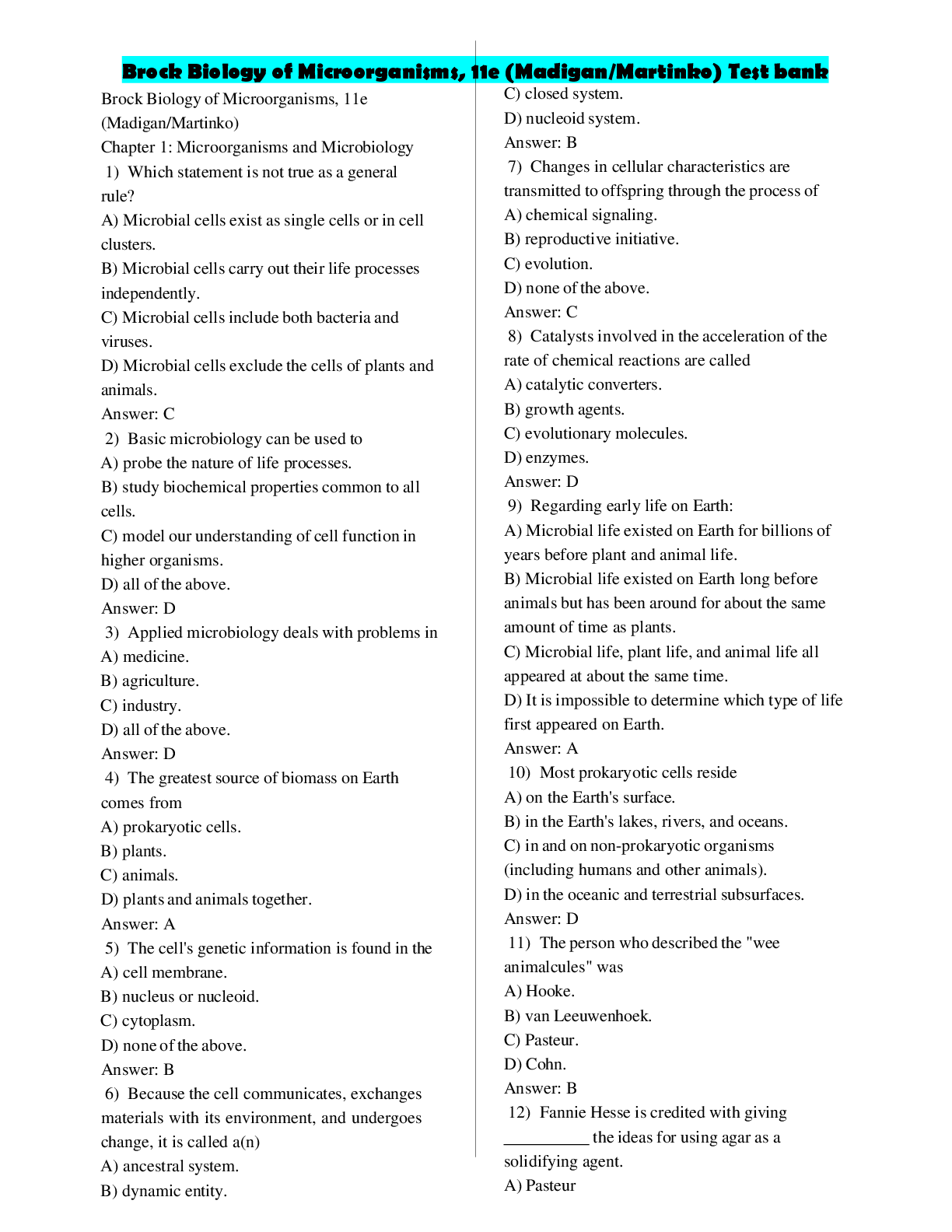
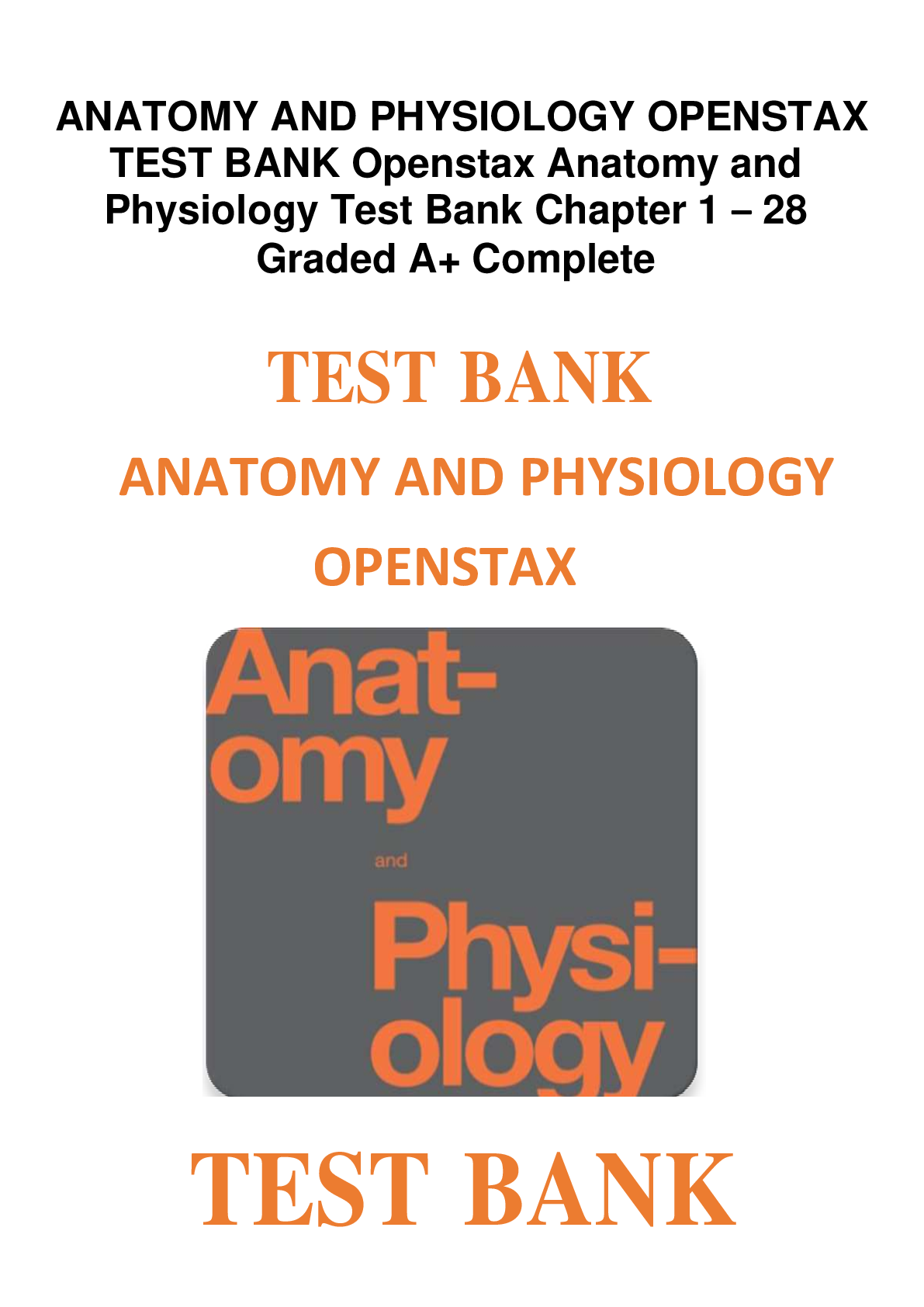
_2022-2023.png)
